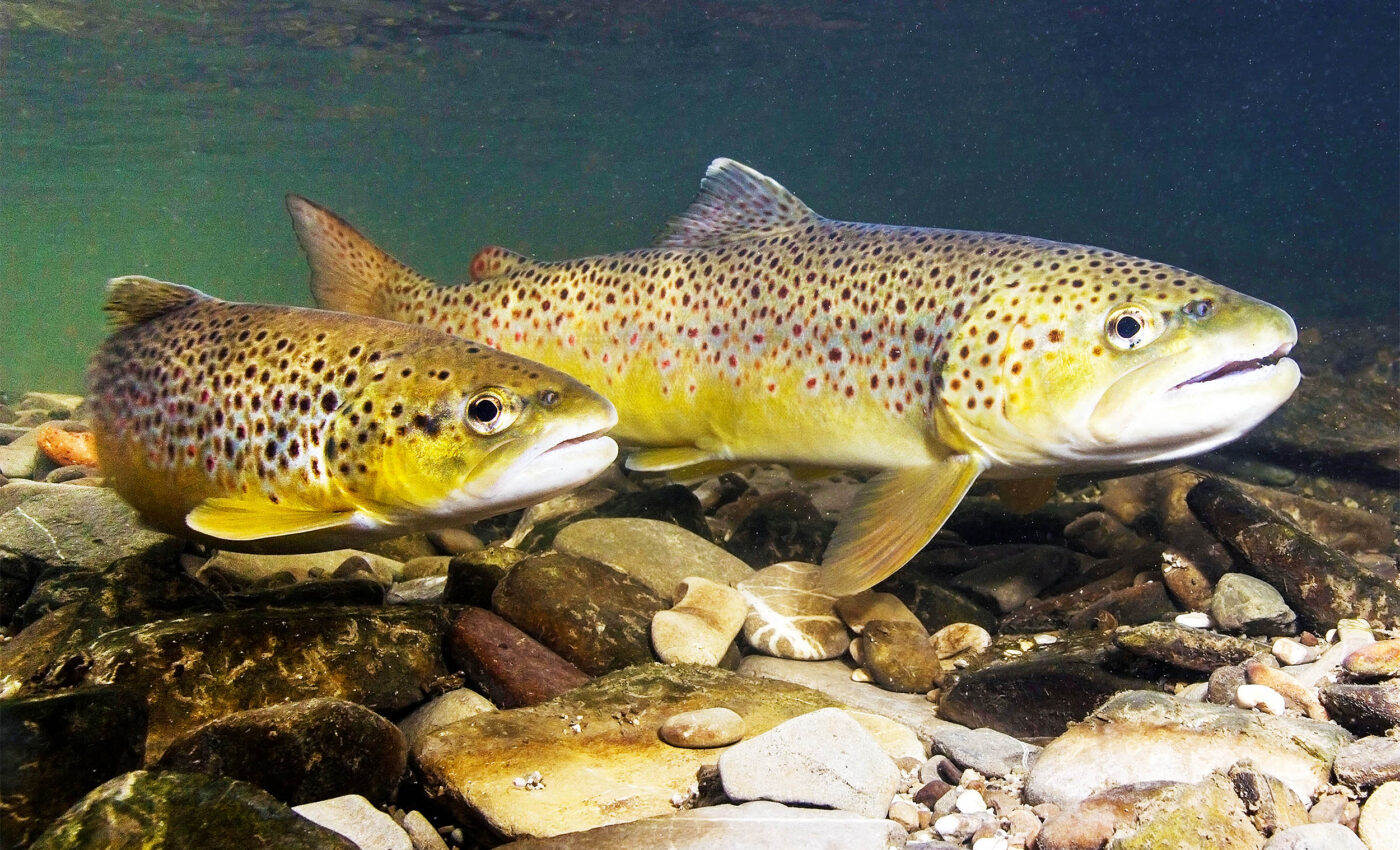
Fish are getting smaller as waters temperatures rise
The Gill Oxygen Limitation (GOL) theory suggests that fish are shrinking as global waters warm due to the limited surface area of their gills, which constrains oxygen uptake.
However, this widely accepted hypothesis has been recently challenged by a team of scientists led by the University of Massachusetts Amherst.
The research, focusing on brook trout, found that while higher temperatures indeed resulted in smaller fish sizes, the change was not directly linked to gill surface area limitations.
Impact of temperature on fish size
Joshua Lonthair, a lecturer in biology at UMass Amherst and the study’s lead author, emphasized the uncertainty surrounding the impact of temperature on fish sizes.
“We know that global climate change is happening and our oceans and rivers are getting warmer. And we know that many animals – not just fish – are growing to smaller adult body sizes under warmer temperatures. We even have a name for this, the Temperature Size Rule. But despite decades of research, we still don’t understand why size decreases as temperature increases.”
Focus of the study
The researchers set out to examine the effects of increased water temperatures on three critical aspects of the Gill Oxygen Limitation (GOL) theory: the growth rate, energy needs, and gill surface area of fish.
They chose brook trout as their subjects due to the species’ rapid growth, significance to both the economy and ecology of the Northeastern U.S., and ease of study.
The team started the experiment with young brook trout, each weighing between one and two grams, placing them in tanks of either standard 15º Celsius water or warmer 20º Celsius water.
The experts monitored the fish’s weight and size monthly from the beginning, alongside measurements of their oxygen consumption after two weeks, three months, and six months to gauge their metabolic rates. Additionally, they collected samples of the gills from these fish to assess any changes in their surface area over time.
Why fish are getting smaller
Analysis of the collected data revealed significant findings: the brook trout in the heated tanks exhibited reduced size, consistent with the Temperature Size Rule expectations.
Interestingly, the data also showed that the gill surface area was sufficient for the fish’s oxygen needs, contradicting the GOL theory’s assumption that limited gill surface area restricts growth at higher temperatures.
Moreover, although the metabolic rates of fish in the warmer tanks initially increased, indicating higher oxygen consumption, these rates normalized by the six-month mark. This adaptation suggests that brook trout can physiologically adjust to warmer conditions over time, further challenging the GOL theory’s premise that temperature-induced oxygen limitations constrain fish growth.
Predicting future climate impacts
“Oxygen use may still be an important limiting factor in fish size but, taken together, our findings show that GOL cannot predict what we’re seeing, and this has implications for predicting climate impacts on future fisheries and ecosystems,” Lonthair said
“Our work highlights the importance of interdisciplinarity. Fisheries and macroecology scientists tend to work on the population and species level, while the physiologists tend to work on the individual and cellular levels. But these are academic distinctions, not natural ones, and if we’re going to help fish survive warming waters, we need to work across biological scales and join the insights of all these fields,” added senior author Professor Lisa Komoroske.
Further research is needed
Thus, the research not only questions the validity of the GOL theory but also underscores the need for more comprehensive studies to fully understand the factors influencing fish size reduction in a warming climate.
The study advocates for additional interdisciplinary research to adapt our fisheries management strategies to the realities of our changing world, moving beyond the simplistic explanations provided by theories like GOL.
So what are the precise mechanisms governing fish size and temperature? “We don’t know yet,” said Lonthair. “And it may not be a single mechanism – it may be a host of factors, including oxygen use. We need more interdisciplinary long-term studies so that we can understand how best to adjust to our warming world.”
The study authors collaborated with researchers from the National Oceanic and Atmospheric Administration, U.S. Geological Survey, and the University of California Davis.
The research is published in the Journal of Experimental Biology.
—–
Like what you read? Subscribe to our newsletter for engaging articles, exclusive content, and the latest updates.
—–
Check us out on EarthSnap, a free app brought to you by Eric Ralls and Earth.com.
—–













